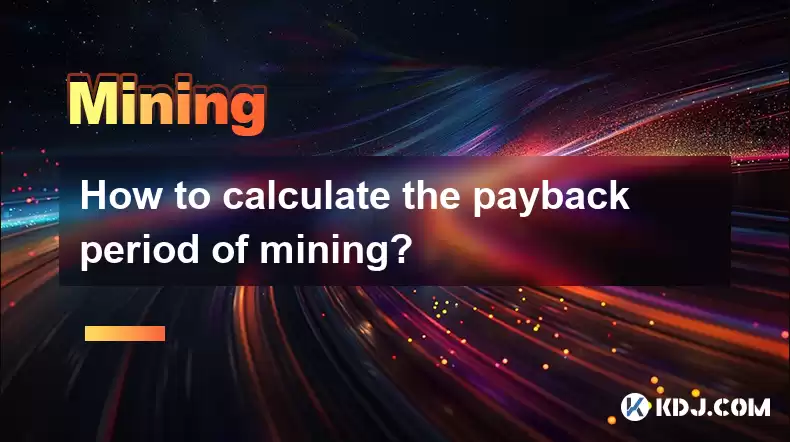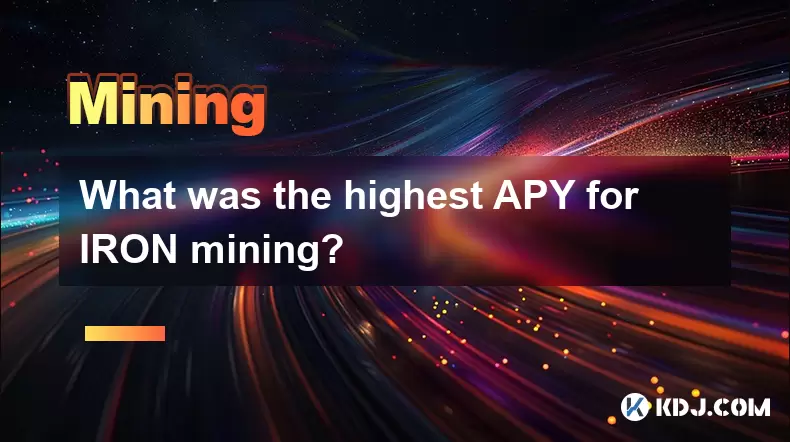-
 Bitcoin
Bitcoin $115000
0.12% -
 Ethereum
Ethereum $3701
4.50% -
 XRP
XRP $3.081
2.99% -
 Tether USDt
Tether USDt $0.0000
-0.01% -
 BNB
BNB $767.9
1.45% -
 Solana
Solana $169.5
3.13% -
 USDC
USDC $0.9999
0.01% -
 Dogecoin
Dogecoin $0.2106
4.30% -
 TRON
TRON $0.3334
1.62% -
 Cardano
Cardano $0.7564
2.54% -
 Stellar
Stellar $0.4165
0.76% -
 Hyperliquid
Hyperliquid $38.75
0.25% -
 Sui
Sui $3.593
3.00% -
 Chainlink
Chainlink $17.08
3.59% -
 Bitcoin Cash
Bitcoin Cash $573.6
4.35% -
 Hedera
Hedera $0.2508
-0.84% -
 Avalanche
Avalanche $23.07
6.46% -
 Ethena USDe
Ethena USDe $1.001
-0.02% -
 Litecoin
Litecoin $120.8
8.17% -
 UNUS SED LEO
UNUS SED LEO $8.943
-0.32% -
 Toncoin
Toncoin $3.400
-5.60% -
 Shiba Inu
Shiba Inu $0.00001255
1.54% -
 Uniswap
Uniswap $9.908
6.32% -
 Polkadot
Polkadot $3.718
2.10% -
 Monero
Monero $303.0
-0.74% -
 Dai
Dai $0.9999
-0.02% -
 Bitget Token
Bitget Token $4.392
0.91% -
 Cronos
Cronos $0.1403
6.31% -
 Pepe
Pepe $0.00001076
1.13% -
 Aave
Aave $267.2
1.80%
How to calculate the payback period of mining?
Calculating the payback period for crypto mining involves initial investment, operational costs, revenue, mining difficulty, and block rewards, taking about 320.51 days to break even.
Apr 10, 2025 at 03:00 pm

Calculating the payback period of mining is a crucial step for any cryptocurrency miner looking to understand the financial viability of their operations. The payback period is the time it takes for the revenue generated from mining to cover the initial investment costs. This calculation involves several factors, including the cost of mining equipment, electricity costs, mining difficulty, and the price of the cryptocurrency being mined. In this article, we will delve into the detailed process of calculating the payback period for mining operations.
Understanding the Components of Payback Period Calculation
To accurately calculate the payback period, it is essential to understand the key components that affect this calculation. These components include:
- Initial Investment: This includes the cost of purchasing mining hardware such as ASIC miners or GPUs, as well as any additional setup costs like cooling systems or mining rigs.
- Operational Costs: The primary operational cost for miners is electricity. The cost per kilowatt-hour (kWh) can vary significantly depending on the location and the efficiency of the mining equipment.
- Revenue: The revenue from mining is determined by the amount of cryptocurrency mined and the current market price of that cryptocurrency.
- Mining Difficulty: This is a measure of how difficult it is to find a new block, which directly affects the amount of cryptocurrency that can be mined in a given period.
- Block Reward: The amount of cryptocurrency awarded for successfully mining a new block.
Calculating the Initial Investment
The first step in calculating the payback period is to determine the total initial investment. This includes the cost of the mining hardware and any additional setup costs. For example, if you are purchasing an ASIC miner for Bitcoin mining, you might spend around $2,000 on the hardware and an additional $500 on setup costs, resulting in a total initial investment of $2,500.
Estimating Operational Costs
Operational costs, particularly electricity, play a significant role in the payback period calculation. To estimate these costs, you need to know the power consumption of your mining equipment and the cost of electricity in your area. For instance, if your ASIC miner consumes 3,000 watts and the cost of electricity is $0.10 per kWh, you can calculate the daily electricity cost as follows:
- Daily Electricity Cost = (3,000 watts / 1,000) 24 hours $0.10/kWh = $7.20 per day
Calculating Revenue from Mining
The revenue from mining depends on the amount of cryptocurrency mined and its current market price. To calculate this, you need to know the hash rate of your mining equipment and the current mining difficulty. For example, if your ASIC miner has a hash rate of 14 TH/s and the current Bitcoin mining difficulty is 20 trillion, you can estimate the number of Bitcoins mined per day using a mining calculator. Let's assume you mine 0.0005 BTC per day and the current price of Bitcoin is $30,000, your daily revenue would be:
- Daily Revenue = 0.0005 BTC * $30,000/BTC = $15 per day
Determining the Payback Period
With the initial investment, operational costs, and daily revenue calculated, you can now determine the payback period. The payback period is the time it takes for the cumulative revenue to equal the initial investment. To calculate this, you need to subtract the daily operational costs from the daily revenue to find the net daily profit, and then divide the initial investment by the net daily profit.
- Net Daily Profit = Daily Revenue - Daily Operational Costs = $15 - $7.20 = $7.80 per day
- Payback Period = Initial Investment / Net Daily Profit = $2,500 / $7.80 = 320.51 days
This means it would take approximately 320.51 days for the mining operation to break even.
Adjusting for Mining Difficulty and Block Reward Changes
It's important to note that mining difficulty and block rewards can change over time, which can affect the payback period. Mining difficulty typically increases as more miners join the network, making it harder to mine new blocks. Additionally, block rewards for some cryptocurrencies, like Bitcoin, are designed to halve at regular intervals. These changes can impact the amount of cryptocurrency mined and, consequently, the revenue and payback period.
To account for these changes, miners often use mining calculators that allow them to input different scenarios and see how changes in mining difficulty and block rewards might affect their payback period. For example, if the mining difficulty increases by 10%, the number of Bitcoins mined per day might decrease to 0.00045 BTC per day, reducing the daily revenue to $13.50. This would increase the payback period to:
- New Net Daily Profit = $13.50 - $7.20 = $6.30 per day
- New Payback Period = $2,500 / $6.30 = 396.83 days
Frequently Asked Questions
Q: How can I reduce the payback period of my mining operation?
A: To reduce the payback period, you can focus on several strategies. First, you can try to reduce your operational costs by using more energy-efficient mining equipment or relocating to an area with lower electricity costs. Second, you can increase your mining efficiency by joining a mining pool, which can help you mine more cryptocurrency more consistently. Finally, you can monitor the cryptocurrency market closely and sell your mined coins when the price is high to maximize your revenue.
Q: What are the risks associated with mining that could affect the payback period?
A: There are several risks that could impact the payback period of mining. These include fluctuations in cryptocurrency prices, changes in mining difficulty, and potential hardware failures. Additionally, regulatory changes in your country could affect the legality and profitability of mining. It's important to stay informed about these factors and adjust your mining strategy accordingly.
Q: Can I use different cryptocurrencies to calculate the payback period?
A: Yes, you can calculate the payback period for mining different cryptocurrencies. The process remains the same, but you will need to adjust the variables such as the block reward, mining difficulty, and the current market price of the cryptocurrency you are mining. For example, if you are mining Ethereum instead of Bitcoin, you would use the Ethereum block reward and the current price of Ethereum in your calculations.
Q: How often should I recalculate the payback period for my mining operation?
A: It's a good practice to recalculate the payback period regularly, especially if there are significant changes in the cryptocurrency market or in your mining setup. Many miners recalculate their payback period monthly or whenever there is a notable change in mining difficulty, block rewards, or cryptocurrency prices. This helps them stay on top of their financial projections and make informed decisions about their mining operations.
Disclaimer:info@kdj.com
The information provided is not trading advice. kdj.com does not assume any responsibility for any investments made based on the information provided in this article. Cryptocurrencies are highly volatile and it is highly recommended that you invest with caution after thorough research!
If you believe that the content used on this website infringes your copyright, please contact us immediately (info@kdj.com) and we will delete it promptly.
- Cryptocurrency, Altcoins, and Profit Potential: Navigating the Wild West
- 2025-08-04 14:50:11
- Blue Gold & Crypto: Investing Disruption in Precious Metals
- 2025-08-04 14:30:11
- Japan, Metaplanet, and Bitcoin Acquisition: A New Era of Corporate Treasury?
- 2025-08-04 14:30:11
- Coinbase's Buy Rating & Bitcoin's Bold Future: A Canaccord Genuity Perspective
- 2025-08-04 14:50:11
- Coinbase's Buy Rating Maintained by Rosenblatt Securities: A Deep Dive
- 2025-08-04 14:55:11
- Cryptos, Strategic Choices, High Returns: Navigating the Meme Coin Mania
- 2025-08-04 14:55:11
Related knowledge

What was the highest APY for IRON mining?
Jul 23,2025 at 05:14am
Understanding IRON Token and Its Mining MechanismThe IRON token is a stablecoin that operates within the Iron Finance ecosystem, primarily on blockcha...

What is impermanent loss in IRON pools?
Jul 23,2025 at 09:00am
Understanding Impermanent Loss in the Context of IRON PoolsImpermanent loss is a phenomenon that affects liquidity providers in decentralized finance ...

How to claim rewards from IRON mining?
Jul 23,2025 at 02:21pm
Understanding IRON Mining and Reward MechanismsIRON Finance operated as a decentralized finance (DeFi) protocol on the Polygon and Binance Smart Chain...

How to claim rewards from IRON mining?
Jul 29,2025 at 05:07am
Understanding IRON Mining and Reward MechanismIRON is a dual-token system designed to stabilize the value of a synthetic asset through a combination o...

IRON mining tutorial for beginners
Jul 27,2025 at 12:01am
What Is IRON and How Does It Work in the Cryptocurrency Ecosystem?IRON is a cryptocurrency token that operates on the Binance Smart Chain (BSC) and is...

How to calculate APY for IRON mining?
Jul 28,2025 at 09:49am
Understanding APY in the Context of IRON Token MiningWhen engaging in IRON token mining within decentralized finance (DeFi) platforms, Annual Percenta...

What was the highest APY for IRON mining?
Jul 23,2025 at 05:14am
Understanding IRON Token and Its Mining MechanismThe IRON token is a stablecoin that operates within the Iron Finance ecosystem, primarily on blockcha...

What is impermanent loss in IRON pools?
Jul 23,2025 at 09:00am
Understanding Impermanent Loss in the Context of IRON PoolsImpermanent loss is a phenomenon that affects liquidity providers in decentralized finance ...

How to claim rewards from IRON mining?
Jul 23,2025 at 02:21pm
Understanding IRON Mining and Reward MechanismsIRON Finance operated as a decentralized finance (DeFi) protocol on the Polygon and Binance Smart Chain...

How to claim rewards from IRON mining?
Jul 29,2025 at 05:07am
Understanding IRON Mining and Reward MechanismIRON is a dual-token system designed to stabilize the value of a synthetic asset through a combination o...

IRON mining tutorial for beginners
Jul 27,2025 at 12:01am
What Is IRON and How Does It Work in the Cryptocurrency Ecosystem?IRON is a cryptocurrency token that operates on the Binance Smart Chain (BSC) and is...

How to calculate APY for IRON mining?
Jul 28,2025 at 09:49am
Understanding APY in the Context of IRON Token MiningWhen engaging in IRON token mining within decentralized finance (DeFi) platforms, Annual Percenta...
See all articles

























































































